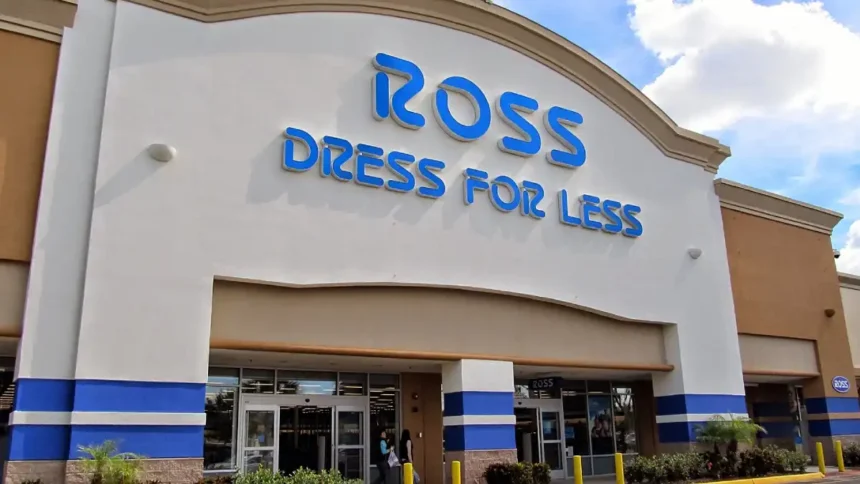Ross Dress for Less (ROST) now finds itself entangled in a gnawing conundrum—one that may soon compel a pivot customers might find disagreeable.
In its first-quarter financial disclosures for 2025, the off-price retail stalwart confessed that its comparable store sales showed no forward pulse—remaining flat when juxtaposed with the same stretch in 2024. Additionally, net income dwindled to $479 million, nearly a 2% erosion compared to the prior year’s earnings for the same quarter.
This fiscal stagnation is shadowed by an unsettling slide in foot traffic. Analytics firm Placer.ai illuminated a 2.7% year-over-year decline in average store visits per location—a whisper that fewer shoppers are weaving through Ross’ aisles.
Ross’ Top Brass Raises the Red Flag
During a May 22 earnings debrief, CEO Jim Conroy didn’t mince words, pinpointing a lackluster launch to the spring shopping season in February. He attributed much of the sluggish performance to persistent inflation, which continues to alter the purchase psychology of Ross’ customer base.
Conroy observed a telling trend: a migration from impulse-driven buying toward utilitarian needs. “There’s been a discernible gravitation toward essentials—pragmatic items—over discretionary ones,” he noted somberly.
But inflation isn’t the lone tempest brewing.
Tariffs—a rekindled trade war relic—are emerging as a formidable disruptor. Conroy signaled these rising import duties as a mounting hazard, further unsettling the landscape.
Last month, President Donald Trump reinstated a 10% blanket tariff across all nations and pressed pause on reciprocal tariff exemptions. That pause concludes in July. Afterward, more than 60 countries will endure heightened duty rates. This cascade could trickle down to the checkout aisle, forcing consumers to absorb the added import costs if retailers pass them along.
“The wildcards in global trade, and the economic aftershocks they provoke, make forecasting and fiscal planning a volatile exercise,” Conroy lamented. “In this ambiguity, we must tighten our grip on what we can govern and tread cautiously.”
Seeking New Shores for Supply
Ross isn’t merely mulling price increases—it’s also courting logistical recalibrations. The company is initiating dialogues with suppliers to renegotiate costs and is probing alternative sourcing nations beyond China. Yet, this strategic detour is no overnight maneuver.
“The rerouting of our supply chain is an extensive undertaking,” Conroy disclosed. “We’re realistically eyeing 2026 before seeing any meaningful transition away from current import dependencies.”
Price Tags May Soon Carry Heavier Weight
Ross’ navigation through this stormy economic terrain involves a potential recalibration of its pricing framework—an unsettling prospect for bargain hunters.
More than half of the retailer’s merchandise pipeline stems from China—one of the nations now under Trump’s punitive tariff gaze. With those rates elevated, Ross is being cornered into tough choices.
Read Also: Sneaker Industry Shift: Dick’s Sporting Goods Makes Big Move
“We’re evaluating the fragile balancing act between maintaining competitive price points and cushioning our margins,” Conroy explained. “We do have tools in our arsenal to mitigate the sting, but some short-term profit pain may be inevitable.”
Chief Operating Officer Michael Hartshorn echoed the trepidation. “We’re exercising deliberate restraint on price hikes. Being the first to elevate prices could alienate our base,” he said. “It’s imperative we uphold the considerable price differential that sets us apart from traditional retailers.”
According to Conroy, pricing decisions will hinge on an item’s nature—whether it’s indulgent or indispensable. “We dissect every category,” he said, “judging how elastic the pricing is based on the product’s utility and the broader retail ecosystem.”
Hartshorn confirmed that customers will start feeling the tariff’s pinch come June and July.
Consumers Already Adjusting Their Compass
Amid the tariff turmoil, the American consumer is already recalibrating. According to a survey by market insight firm Numerator, a striking 83% of U.S. shoppers are preemptively revising their habits. Many are gravitating toward sales, clutching coupons, deferring purchases, or consciously avoiding overseas-made goods.
As Ross teeters on the fulcrum between cost containment and customer value, the coming months will be a test of agility and endurance—for both the retailer and its price-savvy clientele.
Read Also: Trump Confirms Partnership Deal Between Nippon Steel and US Steel




